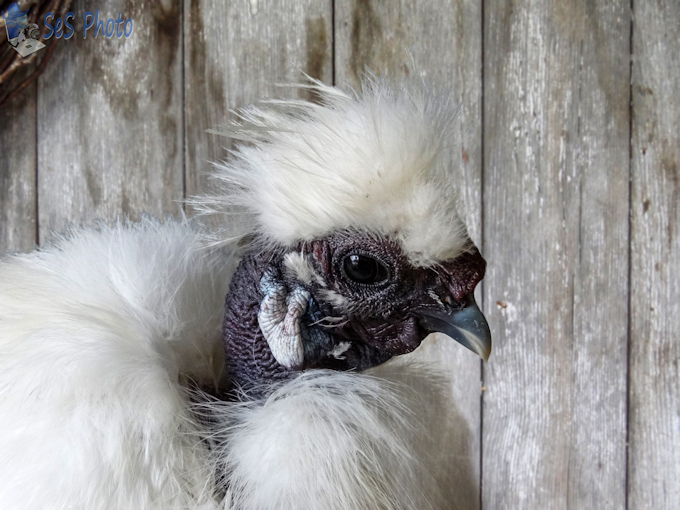Farmers are busy putting up hay during the dry days and even the flowers seem to be enjoying the sunny days instead of having their colors washed out. I wonder if there are any birds nesting in the rustic birdhouse.
Climbing Pink Clematis
You never know what you might find on a winding road, especially on a Wisconsin Rustic Road. This year is the 40 year anniversary of Wisconsin’s Rustic Roads program which have roads with outstanding natural features along its borders such as rugged terrain, native vegetation, native wildlife, or include open areas with agricultural vistas which singly or in combination uniquely set it apart from other roads.
I have a lot of miles to travel to cover all the Rustic Roads since there are 115 designated Rustic Roads spanning more than 665 miles through 59 counties.
Cute Red Shed
I wake up with a rooster tail hairdo but this chicken has more than I get! The Silkie chicken (named for the fluffy plumage, which is said to feel like silk) has an odd looking head and hairdo. The breed has several other unusual qualities, such as black skin and bones, blue earlobes, and five toes on each foot, whereas most chickens only have four.
Bad Chicken Hairdo

The light from the Raspberry Island Lighthouse tower’s fifth-order, fixed lens was exhibited for the first time on July 20, 1863, shining its beacon on the Lake Superior waters in the Apostle Islands.
When built in 1862, Raspberry Island Lighthouse was a two-story, rectangular dwelling with a square tower rising from the center of its pitched roof for the single lighthouse keeper and his family.
As the workload increased with the addition of a fog horn, the old lighthouse was greatly expanded in 1906 and converted into a double dwelling with room for two families and an unmarried assistant. The head keeper occupied the first and second stories on the south side of the lighthouse, what was essentially a three-bedroom dwelling, while the first assistant had the ground floor on the north side and the second assistant three rooms in the upper floor.
Raspberry Island Lighthouse
Area youth have been busy getting their animals ready to exhibit at the local county fair this week and that includes washing their cows and pigs. All that washing creates water running in the drainage ditches and that is a super strong magnet for little boys who love to run through the water or test out how waterproof their shoes really are!
Where There is Water, There are Boys
The evening of July 16, 1942 was an event for those living in Bayfield, Wisconsin, will never forget when an estimated 8 inches of rain fell in about 12 hours and caused a massive flood which destroyed homes, businesses, city blocks, equipment and unearthed caskets from the cemetery. The “Big Ravine” forms a natural drain in normal times, but became a roaring river that night which tossed boulders like marbles and ripped through the city with destructive forces, leaving mud and sand everywhere when the waters receded.
The thirty graves which washed away from the cemetery, where scattered among the mud and not of all the bodies where able to be identified and some had to be re-buried in unmarked graves. In 2007, during a sewer project, more bones were found and were
believed to have been deposited by the 1942 flood.
In front of the Bayfield Heritage Center, a recreation of the mud filled streets which buried cars and trucks from the 1942 flood is on display as well as a section inside the center dedicated to the history of the flood.
Buried by the 1942 Flood
Seeing a wet, shaggy looking flower in the ditch reminded me of my hairdo in the morning. Wild bergamot, is a wildflower in the mint family and is widespread as a native plant in much of North America, and you often see butterflies, moths, and hummingbirds visiting the flowers for nectar. But I didn’t see any insects feeding when it was raining and I was taking the picture, so I guess the butterflies had more sense to stay out of the rain than I did.
Wild Bergamot